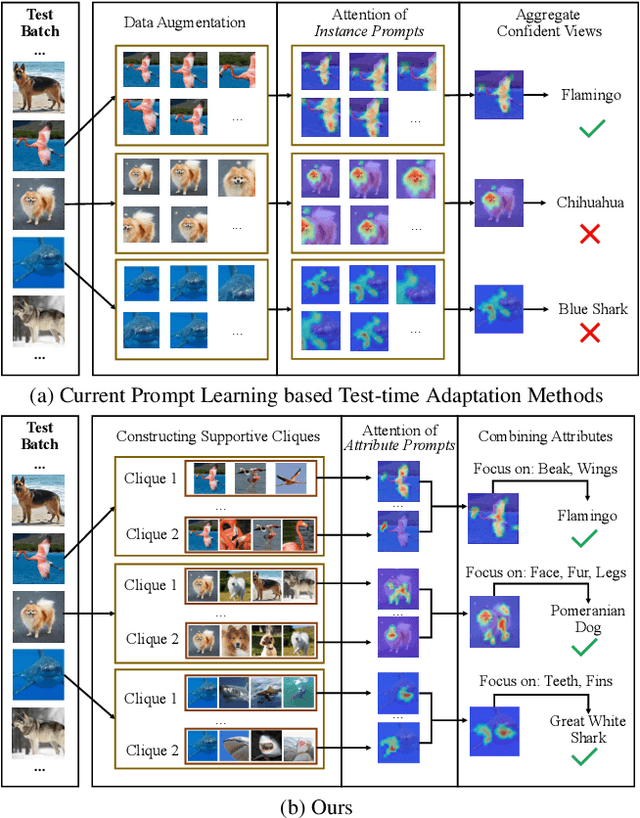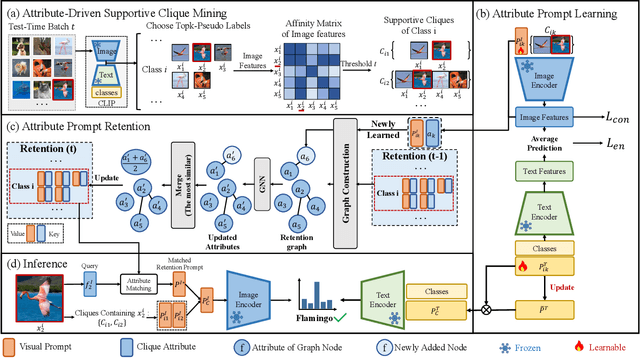Chenyu Zhang
Comparative Performance Analysis of Different Hybrid NOMA Schemes
Sep 18, 2025Abstract:Hybrid non-orthogonal multiple access (H-NOMA), which combines the advantages of pure NOMA and conventional OMA organically, has emerged as a highly promising multiple access technology for future wireless networks. Recent studies have proposed various H-NOMA systems by employing different successive interference cancellation (SIC) methods for the NOMA transmission phase. However, existing analyses typically assume a fixed channel gain order between paired users, despite the fact that channel coefficients follow random distribution, leading to their magnitude relationships inherently stochastic and time varying. This paper analyzes the performance of three H-NOMA schemes under stochastic channel gain ordering: a) fixed order SIC (FSIC) aided H-NOMA scheme; b) hybrid SIC with non-power adaptation (HSIC-NPA) aided H-NOMA scheme; c) hybrid SIC with power adaptation (HSIC-PA) aided H-NOMA scheme. Theoretical analysis derives closed-form expressions for the probability that H-NOMA schemes underperform conventional OMA. Asymptotic results in the high signal-to-noise ratio (SNR) regime are also developed. Simulation results validate our analysis and demonstrate the performance of H-NOMA schemes across different SNR scenarios, providing a theoretical foundation for the deployment of H-NOMA in next-generation wireless systems.
MoFE-Time: Mixture of Frequency Domain Experts for Time-Series Forecasting Models
Jul 09, 2025Abstract:As a prominent data modality task, time series forecasting plays a pivotal role in diverse applications. With the remarkable advancements in Large Language Models (LLMs), the adoption of LLMs as the foundational architecture for time series modeling has gained significant attention. Although existing models achieve some success, they rarely both model time and frequency characteristics in a pretraining-finetuning paradigm leading to suboptimal performance in predictions of complex time series, which requires both modeling periodicity and prior pattern knowledge of signals. We propose MoFE-Time, an innovative time series forecasting model that integrates time and frequency domain features within a Mixture of Experts (MoE) network. Moreover, we use the pretraining-finetuning paradigm as our training framework to effectively transfer prior pattern knowledge across pretraining and finetuning datasets with different periodicity distributions. Our method introduces both frequency and time cells as experts after attention modules and leverages the MoE routing mechanism to construct multidimensional sparse representations of input signals. In experiments on six public benchmarks, MoFE-Time has achieved new state-of-the-art performance, reducing MSE and MAE by 6.95% and 6.02% compared to the representative methods Time-MoE. Beyond the existing evaluation benchmarks, we have developed a proprietary dataset, NEV-sales, derived from real-world business scenarios. Our method achieves outstanding results on this dataset, underscoring the effectiveness of the MoFE-Time model in practical commercial applications.
Spreading Depolarization Detection in Electrocorticogram Spectrogram Imaging by Deep Learning: Is It Just About Delta Band?
May 01, 2025Abstract:Prevention of secondary brain injury is a core aim of neurocritical care, with Spreading Depolarizations (SDs) recognized as a significant independent cause. SDs are typically monitored through invasive, high-frequency electrocorticography (ECoG); however, detection remains challenging due to signal artifacts that obscure critical SD-related electrophysiological changes, such as power attenuation and DC drifting. Recent studies suggest spectrogram analysis could improve SD detection; however, brain injury patients often show power reduction across all bands except delta, causing class imbalance. Previous methods focusing solely on delta mitigates imbalance but overlooks features in other frequencies, limiting detection performance. This study explores using multi-frequency spectrogram analysis, revealing that essential SD-related features span multiple frequency bands beyond the most active delta band. This study demonstrated that further integration of both alpha and delta bands could result in enhanced SD detection accuracy by a deep learning model.
A Reactive Framework for Whole-Body Motion Planning of Mobile Manipulators Combining Reinforcement Learning and SDF-Constrained Quadratic Programmi
Mar 31, 2025Abstract:As an important branch of embodied artificial intelligence, mobile manipulators are increasingly applied in intelligent services, but their redundant degrees of freedom also limit efficient motion planning in cluttered environments. To address this issue, this paper proposes a hybrid learning and optimization framework for reactive whole-body motion planning of mobile manipulators. We develop the Bayesian distributional soft actor-critic (Bayes-DSAC) algorithm to improve the quality of value estimation and the convergence performance of the learning. Additionally, we introduce a quadratic programming method constrained by the signed distance field to enhance the safety of the obstacle avoidance motion. We conduct experiments and make comparison with standard benchmark. The experimental results verify that our proposed framework significantly improves the efficiency of reactive whole-body motion planning, reduces the planning time, and improves the success rate of motion planning. Additionally, the proposed reinforcement learning method ensures a rapid learning process in the whole-body planning task. The novel framework allows mobile manipulators to adapt to complex environments more safely and efficiently.
SCAP: Transductive Test-Time Adaptation via Supportive Clique-based Attribute Prompting
Mar 17, 2025

Abstract:Vision-language models (VLMs) encounter considerable challenges when adapting to domain shifts stemming from changes in data distribution. Test-time adaptation (TTA) has emerged as a promising approach to enhance VLM performance under such conditions. In practice, test data often arrives in batches, leading to increasing interest in the transductive TTA setting. However, existing TTA methods primarily focus on individual test samples, overlooking crucial cross-sample correlations within a batch. While recent ViT-based TTA methods have introduced batch-level adaptation, they remain suboptimal for VLMs due to inadequate integration of the text modality. To address these limitations, we propose a novel transductive TTA framework, Supportive Clique-based Attribute Prompting (SCAP), which effectively combines visual and textual information to enhance adaptation by generating fine-grained attribute prompts across test batches. SCAP first forms supportive cliques of test samples in an unsupervised manner based on visual similarity and learns an attribute prompt for each clique, capturing shared attributes critical for adaptation. For each test sample, SCAP aggregates attribute prompts from its associated cliques, providing enriched contextual information. To ensure adaptability over time, we incorporate a retention module that dynamically updates attribute prompts and their associated attributes as new data arrives. Comprehensive experiments across multiple benchmarks demonstrate that SCAP outperforms existing state-of-the-art methods, significantly advancing VLM generalization under domain shifts. Our code is available at https://github.com/zhoujiahuan1991/CVPR2025-SCAP.
Topology-Preserving Loss for Accurate and Anatomically Consistent Cardiac Mesh Reconstruction
Mar 10, 2025Abstract:Accurate cardiac mesh reconstruction from volumetric data is essential for personalized cardiac modeling and clinical analysis. However, existing deformation-based approaches are prone to topological inconsistencies, particularly membrane penetration, which undermines the anatomical plausibility of the reconstructed mesh. To address this issue, we introduce Topology-Preserving Mesh Loss (TPM Loss), a novel loss function that explicitly enforces topological constraints during mesh deformation. By identifying topology-violating points, TPM Loss ensures spatially consistent reconstructions. Extensive experiments on CT and MRI datasets show that TPM Loss reduces topology violations by up to 93.1% while maintaining high segmentation accuracy (DSC: 89.1%-92.9%) and improving mesh fidelity (Chamfer Distance reduction up to 0.26 mm). These results demonstrate that TPM Loss effectively prevents membrane penetration and significantly improves cardiac mesh quality, enabling more accurate and anatomically consistent cardiac reconstructions.
TRCE: Towards Reliable Malicious Concept Erasure in Text-to-Image Diffusion Models
Mar 10, 2025Abstract:Recent advances in text-to-image diffusion models enable photorealistic image generation, but they also risk producing malicious content, such as NSFW images. To mitigate risk, concept erasure methods are studied to facilitate the model to unlearn specific concepts. However, current studies struggle to fully erase malicious concepts implicitly embedded in prompts (e.g., metaphorical expressions or adversarial prompts) while preserving the model's normal generation capability. To address this challenge, our study proposes TRCE, using a two-stage concept erasure strategy to achieve an effective trade-off between reliable erasure and knowledge preservation. Firstly, TRCE starts by erasing the malicious semantics implicitly embedded in textual prompts. By identifying a critical mapping objective(i.e., the [EoT] embedding), we optimize the cross-attention layers to map malicious prompts to contextually similar prompts but with safe concepts. This step prevents the model from being overly influenced by malicious semantics during the denoising process. Following this, considering the deterministic properties of the sampling trajectory of the diffusion model, TRCE further steers the early denoising prediction toward the safe direction and away from the unsafe one through contrastive learning, thus further avoiding the generation of malicious content. Finally, we conduct comprehensive evaluations of TRCE on multiple malicious concept erasure benchmarks, and the results demonstrate its effectiveness in erasing malicious concepts while better preserving the model's original generation ability. The code is available at: http://github.com/ddgoodgood/TRCE. CAUTION: This paper includes model-generated content that may contain offensive material.
In-Context Meta LoRA Generation
Jan 30, 2025



Abstract:Low-rank Adaptation (LoRA) has demonstrated remarkable capabilities for task specific fine-tuning. However, in scenarios that involve multiple tasks, training a separate LoRA model for each one results in considerable inefficiency in terms of storage and inference. Moreover, existing parameter generation methods fail to capture the correlations among these tasks, making multi-task LoRA parameter generation challenging. To address these limitations, we propose In-Context Meta LoRA (ICM-LoRA), a novel approach that efficiently achieves task-specific customization of large language models (LLMs). Specifically, we use training data from all tasks to train a tailored generator, Conditional Variational Autoencoder (CVAE). CVAE takes task descriptions as inputs and produces task-aware LoRA weights as outputs. These LoRA weights are then merged with LLMs to create task-specialized models without the need for additional fine-tuning. Furthermore, we utilize in-context meta-learning for knowledge enhancement and task mapping, to capture the relationship between tasks and parameter distributions. As a result, our method achieves more accurate LoRA parameter generation for diverse tasks using CVAE. ICM-LoRA enables more accurate LoRA parameter reconstruction than current parameter reconstruction methods and is useful for implementing task-specific enhancements of LoRA parameters. At the same time, our method occupies 283MB, only 1\% storage compared with the original LoRA.
DeepSeek-V3 Technical Report
Dec 27, 2024



Abstract:We present DeepSeek-V3, a strong Mixture-of-Experts (MoE) language model with 671B total parameters with 37B activated for each token. To achieve efficient inference and cost-effective training, DeepSeek-V3 adopts Multi-head Latent Attention (MLA) and DeepSeekMoE architectures, which were thoroughly validated in DeepSeek-V2. Furthermore, DeepSeek-V3 pioneers an auxiliary-loss-free strategy for load balancing and sets a multi-token prediction training objective for stronger performance. We pre-train DeepSeek-V3 on 14.8 trillion diverse and high-quality tokens, followed by Supervised Fine-Tuning and Reinforcement Learning stages to fully harness its capabilities. Comprehensive evaluations reveal that DeepSeek-V3 outperforms other open-source models and achieves performance comparable to leading closed-source models. Despite its excellent performance, DeepSeek-V3 requires only 2.788M H800 GPU hours for its full training. In addition, its training process is remarkably stable. Throughout the entire training process, we did not experience any irrecoverable loss spikes or perform any rollbacks. The model checkpoints are available at https://github.com/deepseek-ai/DeepSeek-V3.
HoVLE: Unleashing the Power of Monolithic Vision-Language Models with Holistic Vision-Language Embedding
Dec 20, 2024Abstract:The rapid advance of Large Language Models (LLMs) has catalyzed the development of Vision-Language Models (VLMs). Monolithic VLMs, which avoid modality-specific encoders, offer a promising alternative to the compositional ones but face the challenge of inferior performance. Most existing monolithic VLMs require tuning pre-trained LLMs to acquire vision abilities, which may degrade their language capabilities. To address this dilemma, this paper presents a novel high-performance monolithic VLM named HoVLE. We note that LLMs have been shown capable of interpreting images, when image embeddings are aligned with text embeddings. The challenge for current monolithic VLMs actually lies in the lack of a holistic embedding module for both vision and language inputs. Therefore, HoVLE introduces a holistic embedding module that converts visual and textual inputs into a shared space, allowing LLMs to process images in the same way as texts. Furthermore, a multi-stage training strategy is carefully designed to empower the holistic embedding module. It is first trained to distill visual features from a pre-trained vision encoder and text embeddings from the LLM, enabling large-scale training with unpaired random images and text tokens. The whole model further undergoes next-token prediction on multi-modal data to align the embeddings. Finally, an instruction-tuning stage is incorporated. Our experiments show that HoVLE achieves performance close to leading compositional models on various benchmarks, outperforming previous monolithic models by a large margin. Model available at https://huggingface.co/OpenGVLab/HoVLE.
 Add to Chrome
Add to Chrome Add to Firefox
Add to Firefox Add to Edge
Add to Edge